Did you know that the cannabis plant has existed out in the wild for millions of years but only became cultivated by humans around 500 BC in ancient Asia? Since then, cannabis has had use as folk medicine but in more recent times has been popular for recreational use as well.
While many people are familiar with the terms “marijuana” and “cannabis,” fewer people are aware of the differences between the strains indica and sativa. It’s important to know about these strains because they show that different kinds of cannabis can produce different effects. The indica vs. sativa argument may seem confusing if you know nothing about them, but that is what this article aims to discuss.
Throughout this article, we will explore the details of the cannabis plant and its growth as well as the different cannabis strains. We will also take a look at how the various strains produce different effects. By knowing this information, you can be confident in choosing the right strain for you, especially if you’ve never experimented with cannabis before.
To start off our discussion, we’ll take a closer look at the anatomy of the cannabis plant, where it grows, and how it’s cultivated.
While we have already discussed the different strains of cannabis, it’s time to dive deeper into the effects of indica and sativa strains. If you have never tried cannabis or cannabis products before, you will find that knowing more about these strains and their effect will help you to better decide which strain might be right for you.
It is also important to consider why you might want to choose a certain kind of cannabis strain over another. For example, some might want a strain that will keep them full of energy throughout the day. Others may want a strain that will keep them focused so they can work on a big project.
Others still may want a strain that can help them get to sleep and stay asleep. There are endless uses for cannabis, whether they be medical or recreational. Let’s start by first discussing indica which is usually more popular than sativa for a variety of reasons.

Understanding the Cannabis Plant
The cannabis plant has two major strains: Cannabis sativa and Cannabis indica. These names, of course, give rise to the strains of sativa and indica that many people enjoy and can find at any cannabis dispensary. While these two kinds of plants are both members of the cannabis family, they have some differences in their appearance and in their chemical composition. There is another kind of cannabis plant known as Cannabis ruderalis, however, this plant is not considered cannabis but rather hemp. This is because hemp does not produce high amounts of THC which is the psychoactive compound that produces a high when consumed. Instead, the hemp plant is high in another compound known as CBD which is non-psychoactive and does not produce a high. On the other hand, the indica and sativa plants tend to produce very high amounts of THC which is one of the reasons they are so widely cultivated. It is important to keep in mind that both indica and sativa plants each have countless more strains that all have their unique properties. However, for the sake of simplicity, we will continue to focus on the overall characteristics of indica and sativa. Beyond that, by understanding the basics of indica and sativa, you will better be able to understand the more specific strains that you may come across later. Let’s first take a look at how indica and sativa plants differ in regard to appearance.The Anatomy of the Cannabis Indica Plant
Indica plants are stout and bushy plants that tend to grow in dry and difficult environments. In fact, the indica plant is native to the countries of Turkey, Afghanistan, and Pakistan. The short and sturdy nature of these plants helps them to retain water and take root in hard and dry soil. Of course, now that greenhouses are available, indica plants can grow in much more favorable environments. Because of this, cannabis plants grown inside greenhouses can grow healthier and larger than they ever could when growing out in the wild. If you take a look at the leaves of an indica plant, you will see the star-shaped leaves that are typical of all cannabis plants. However, if you look closer, there are some details that distinguish these leaves from the sativa plant. The most notable characteristic of indica leaves is that they are very wide and sturdy and tend to be a very dark shade of green. Indica plants tend to grow very fast and produce more buds, sometimes called flowers. These buds are the most valuable product of the plant because they are what people smoke or otherwise consume. The buds tend to appear anywhere between 40 and 60 days of the plant’s development. Indica plants have a high concentration of THC in addition to high levels of CBD. We will explore how cannabis plants are able to produce THC and CBD in a moment. First, however, we must explore what makes sativa plants unique when compared to indica plants.The Anatomy of The Cannabis Sativa Plant
The sativa plant has several important differences when compared to its sister plant. The first difference is that, in nature, it grows in different locations compared to indica. Instead of growing in the dry, rocky landscape of Afghanistan and Pakistan, sativa tends to grow in the warm, sunny environments of Asia, South America, and some portions of Africa. At first glance, you will notice that the sativa plant is a tall and thin plant when compared to the stout indica plant. You will also notice a difference in the structure of its leaves. The parts of sativa plants, including the leaves, are long and slim and are usually a light green color. Some sativa plants can reach heights above 12 feet. Sativa plants grow quite slowly and take some time before they can produce buds. The first buds usually appear between 70 and 100 days of the plant’s development. While this long development might be annoying to some cultivators, the sativa product is worth it. The chemical composition of sativa is also different compared to that of indica plants. Sativa plants have similarly high levels of THC, but, in contrast, they produce lower concentrations of CBD. Because of this difference in concentration, sativa plants produce different effects compared to the effects produced with indica products. Speaking of CBD and THC, let’s take a closer look at how cannabis plants can produce these chemicals that stimulate our brains in unique ways.The Parts of the Cannabis Plant
There is more to the cannabis plant than stems and leaves. All cannabis plants start as seeds that sprout with a taproot; a strong, singular root that keeps the plant secure in the ground. A healthy cannabis plant will develop many nodes which are the points at which branches sprout from the plant’s main stem. Sometimes, it can be beneficial to cut the plant at some nodes if the plant is growing too tall or lanky. By doing this, the plant will grow wider and bushier rather than taller. This can be beneficial for the plant’s overall health and quality of production. At certain nodes, small leaves known as fan leaves may develop. Cultivators will snip these leaves away because they are not useful in the production of cannabis products. When buds or flowers start to develop on the plant, little leaves will form around the buds.These leaves have the name of sugar leaves. They are rich in resin for the creation of cannabis products such as extracts. Because of this, these sugar leaves are important for cannabis cultivators who set them aside from the rest of the plant. The buds are the crown jewels of the cannabis plant. They are, in essence, the fruit of the plant and have one of the highest concentrations of THC, terpenes, and CBD than any other part of the plant. It is important to remember that only female cannabis plants are able to produce these buds. The part of the plant that produces the highest concentration of cannabinoids, that is, THC and CBD, is the bract. The bract is a protective layer of tiny leaves that surrounds the reproductive organs of the female plant. The bract is also extraordinarily rich in resin.The Trichomes of the Cannabis Plant
Of all the parts of the cannabis plant, we can’t forget about the trichomes. If you look at any mature cannabis bud, you will notice that it seems frosted over with something. This something is the trichomes: tiny filaments in the shape of mushrooms that cover much of the cannabis plant. Trichomes produce a very strong resin used in the production of hash. Trichomes are also very high in THC and CBD concentrations. In fact, if these trichomes didn’t exist, cannabis plants would have a very hard time producing any cannabinoids at all. This is because trichomes are responsible for producing the master cannabinoid known as THCA which turns into THC when exposed to heat. These trichomes, of course, do not exist only to get us high. The original purpose of trichomes is to fend off potential predictors such as insects. Trichomes are also capable of preventing the cannabis plant from losing water, keeping the plant warm when temperatures drop and luring in potential pollinators. At this point, you may be wondering how cannabis comes from the plant and ends up on the shelves of dispensaries across the country. Is it really as easy as plucking some buds off of some cannabis plants and then sending them off to be sold? Unfortunately, the process is not quite so easy. The cultivation and production of cannabis require a lot of attention to detail and patience which we will explore next.From Greenhouse to Dispensary
As with any product, certain measures are necessary to make sure the product is ready for distribution. When it comes to the cultivation of cannabis, a few different measures are necessary. The first of these measures is determining which parts of the plants need to be saved when it’s time for harvesting. This is determined by the purpose of the cannabis plant. For example, some plants may be grown for the production of hemp fiber, some may be grown to breed with other plants, and others may be cultivated to be smoked. For smoking cannabis, a good indicator that the plant is mature enough for harvesting is the color of the trichomes. Trichomes are white early in the plant’s life, but as the plant ages, the trichomes will turn reddish in color. Great care is needed for determining when it’s time to pluck the buds. This is because once the buds are ripe, they will have maximum concentrations of cannabinoids, but if the buds develop further, the concentration of cannabinoids will decrease due to the breakdown of these chemicals. While some strains of cannabis may be purposely harvested late due to the unique effects produced from this process, most buds are harvested at their peak. Once it’s time for harvesting, the buds are removed from the plant and are then dried and cured.The Drying Process
Drying and curing is an essential step in the production of smokable cannabis. If the buds are not dried and cured, the moisture from the plant will remain inside the buds. This not only will make the buds hard to smoke but the smell and taste will be unpleasant. The best way to dry cannabis buds is by placing them in a dark room around room temperature or slightly cooler. If the room is any warmer than this, there is the risk that some of the chemical compounds of the buds will evaporate in the heat. The buds are usually hung by their stalks. The drying process can vary depending on the size of the buds, but it tends to last between a few weeks and a few months until the buds are dry. During the drying process, it is essential that the room in which the buds are drying has a low humidity level. This is because if the humidity is too high, the buds will not be able to dry properly. In fact, in some cases, high humidity levels may cause the buds to grow mold or develop mildew which would ruin them. On the other hand, the room should not be devoid of all humidity either as this could cause the buds to dry out quicker than usual. If this occurs, the ideal taste of the buds will not develop, ultimately leading to a lower-quality smoke. You may be wondering why the drying process should take place in a dark room rather than a room with light. This is because the THC in the buds becomes altered on a chemical level when exposed to light. This alteration can also lower the quality of the buds.The Curing Process
The curing process only begins once the cannabis buds reach a dryness level of around 60% or more. Once the cannabis buds reach this point of dryness, they are transferred into airtight containers where the curing process can begin. The curing process is important because, on top of the drying process, it can give the cannabis buds a more refined flavor which results in a more pleasurable smoke. The curing process can last anywhere from one month to several months until the process is complete. Often, the longer the buds are cured, the better the aroma and flavor will be. As with the drying process, the curing process takes place in a dark room around room temperature. After the curing process is complete, the cannabis buds are ready to be shipped off to dispensaries around the country and consumed.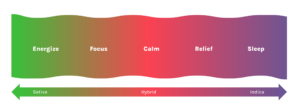 The Big Differences Between Indica Vs. Sativa
The Big Differences Between Indica Vs. Sativa
While we have already discussed the different strains of cannabis, it’s time to dive deeper into the effects of indica and sativa strains. If you have never tried cannabis or cannabis products before, you will find that knowing more about these strains and their effect will help you to better decide which strain might be right for you.
It is also important to consider why you might want to choose a certain kind of cannabis strain over another. For example, some might want a strain that will keep them full of energy throughout the day. Others may want a strain that will keep them focused so they can work on a big project.
Others still may want a strain that can help them get to sleep and stay asleep. There are endless uses for cannabis, whether they be medical or recreational. Let’s start by first discussing indica which is usually more popular than sativa for a variety of reasons.
Understanding Indica Cannabis
When most people think of someone smoking cannabis, they think of someone sunken into the couch surrounded by snacks as they relax and watch a movie. When it comes to indica strains, this image is not too far from reality. Indica is known for its ability to produce a strong and relaxing high. Its effects are thanks to its chemical content. Indica not only has high concentrations of THC but very high concentrations of CBD as well. The two of these cannabinoids together can make for a very relaxing experience when indica is smoked or otherwise consumed. If you decide to smoke indica rather than consume it in other ways, you will find that its effects are next to instant. This is because when you inhale the cannabis, the THC will travel through your lungs and into your bloodstream. Any drug that enters your bloodstream will produce an effect. On the other hand, if you eat something containing indica, you will need to wait a few hours before you will feel any effects. This is because it will take some time for your stomach to break down the THC product and then absorb the THC into your bloodstream. Also, with this method, smaller amounts of THC will be entering your bloodstream at once when compared to smoking. There are many uses for indica because of its properties. Because the effects of indica tend to be relaxing, many may find that it is the perfect type of cannabis to help them unwind after a long and stressful day. Others who have trouble sleeping may find that indica can help them drift off. One thing is certain: indica is not the best choice if you need to keep yourself awake and alert. For that, you’re better off choosing a sativa strain instead.What are the main differences between Indica and Sativa cannabis strains?
When comparing effects of cannabis strains, it’s important to consider Indica’s calming and sedative effects, making it a good choice for nighttime use. On the other hand, Sativa is known for its energizing and uplifting effects, making it better suited for daytime consumption. These differences make each strain unique.

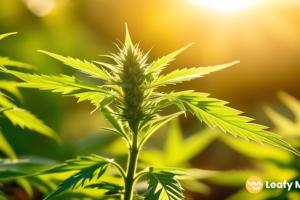
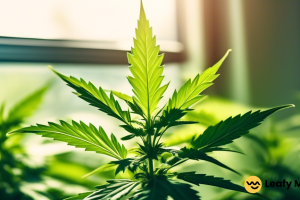





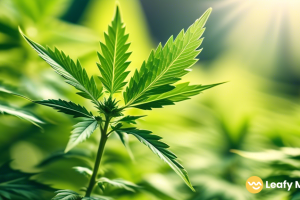
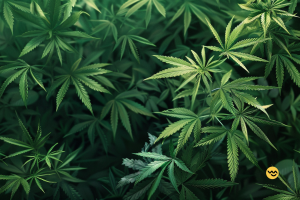
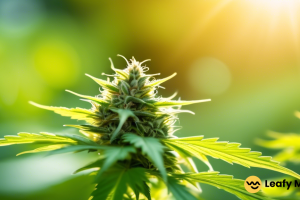
Leave a Reply